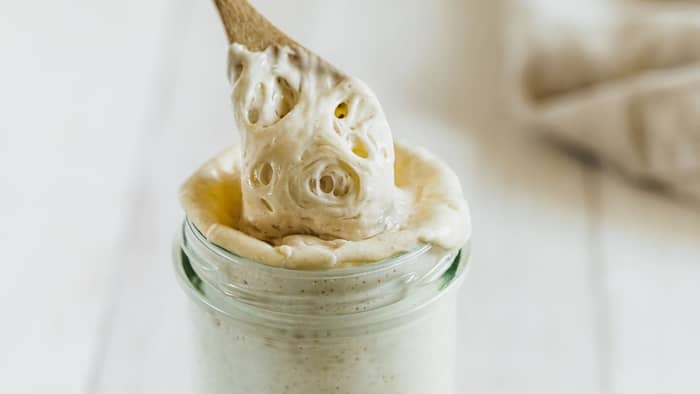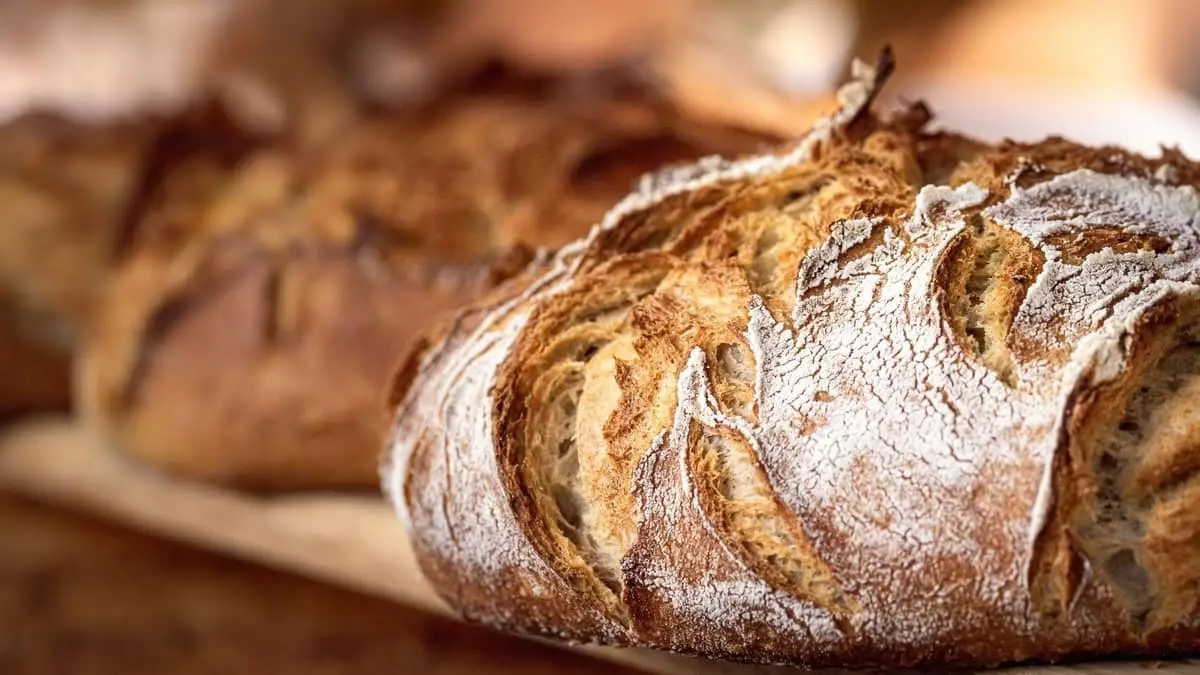Last Updated on April 9, 2022
Do you know how to tell if sourdough bread is bad? We have the ultimate guide for you! And, we’ve even included the best storage guide to follow!
What Is Sourdough Bread?
Sourdough is a bread that is very close to our hearts. While it isn’t by any means an easy type of bread to make, it is definitely worth the effort and time spent.
This amazing bread is a type of slow-fermented bread. What this means is that it is made using a sourdough starter, which is a living natural fermented leavening agent. This bread doesn’t use commercially produced leaveners like i, baking powder, or bicarbonate of soda.
Instead, this leavening agent is fed using flour and water. The bacteria present in the flour produce carbon dioxide bubbles. These bubbles expand when the loaf is baked and help give the dough its lift.
The starter also helps add a yeasty flavor to the bread and gives it a slightly tangy flavor. This unique loaf is beloved around the world and can be used to make open-faced sandwiches, bread and butter puddings, artisan sandwiches, and even types of burgers.
Characteristics of a sourdough loaf
This amazing loaf should have a tangy yeasty flavor with a hint of sweetness. It has quite a rich flavor and pairs well with most toppings.
The crust should be thin, yet crisp and crackly. And the internal texture (also referred to as the crumb) should be chewy, yet soft and spongy.
Sourdough bread has a very open crumb and has a ton of big and small holes throughout the bread. Generally, bakers say that the more big holes there are, the more active and healthy your sourdough starter is.
How To Tell If Sourdough Bread Is Bad
There are a couple of ways how to tell if sourdough bread is bad. There are also varying stages of bad.
First, your bread is likely to go stale. While this doesn’t necessarily make the sourdough inedible, it does make it far less appealing.
Only after it has gone stale will it start showing other signs of going bad, including rancid odors, mold on sourdough bread, and even complete textural changes.
So, here are the best ways how to tell if sourdough bread is bad.
1. Your sourdough goes stale
If your sourdough isn’t stored properly, it will go stale long before it starts going bad. However, once it reached a certain amount of staleness, it is inedible because of its unappealing textures and flavors.
Stale sourdough bread has a very bland texture and can become extremely dry.
2. Mold on sourdough bread
The most telltale sign how to tell if sourdough bread is bad is once mold starts growing on the breads’ crust or sliced surface.
And, because you are working with wild yeast in your recipe (from the sourdough starter) the mold will appear in many different textures and colors. Essentially, any type of mold should be considered to be bad mold!
Most Complete Bread Banneton Proofing Basket Kit
3. A rancid or medicinal smell
We don’t recommend inhaling close to the potentially moldy bread to check whether or not you smell anything rancid. This is dangerous because you could inhale moldy spores, which can cause you to become ill.
Once you start smelling rancidity on bread without having to look for it, your bread has gone bad. Remember, sourdough will have a naturally yeasty aroma, so don’t analyze the smells too much. you will know when it doesn’t smell like it should.
4. Textural changes
Any textural changes (and we aren’t referring to the loaf going stale) are a sign that your bread is going off. Different environments will cause the bread to change in different ways.
So, sometimes it may become soggy, and sometimes it could become extremely hard or soft. Regardless, no changes should take place.
5. Off flavors
Last, but certainly equally important, is that the sourdough shouldn’t have any weird flavors. once flavors start changing, especially if the flavor is rancid or exceptionally sour, it is a sign that the bread is nearing the end of its life.
Always rather be safe than sorry and discard any bread that you are uncertain of.
How To Tell If Your Sourdough Starter Is Bad
Now that we have looked at exactly how to tell if sourdough bread is bad, let’s have a look at the signs of a bad starter.
Your starter will vary in color and texture. This all depends on the bacteria naturally present in that environment.
However, the starter should never have a pink or orange tint to it. Sometimes these also appear in streaks throughout the starter dough. The starter isn’t even saveable and should be discarded immediately.
The next visible sign is if there are white spots on sourdough starter. Of course, the starter contains bacteria, but once they become visible, it likely isn’t the good kind!
Again, if the mold is pink or orange, it should be discarded immediately. A lot of people say that white mold is fine, but one of our baker friends says that any visible mold is bad mold when it comes to bread making.

How To Properly Store Sourdough Bread
The best way to store your sourdough bread is in a paper bag that has been closed. This allows the bread to breathe without drying out. It also helps prevent it sweating and helps preserve the flavor.
You can also wrap it loosely in a dry tea towel.
Store the sourdough bread in a bread bin or pantry. Just don’t place it inside the refrigerator. This is how this bread dries out the fastest.
Shelf life of sourdough bread
Sourdough bread, if properly stored, will last about 4-5 days when kept at room temperature.
When storing it in the fridge, it will prevent mold growth for a But, it will also cause the loaf to dry out more quickly.
And, when storing the sourdough inside of the freezer, it can last a couple of months. But, keep in mind that the texture and flavor will be completely different from freshly baked bread.
Conclusion
How to tell if sourdough bread is bad doesn’t have to be complicated. And, by using the proper storage techniques, you can extend the shelf life a lot and have fresh bread all week! If you enjoyed this article and learned something, feel free to share it with your fellow baking community!
FAQs
How long does sourdough bread last?
Sourdough bread, if properly stored, can last between 4-5 days at room temperature. When frozen, it can last a couple of months, but the texture and flavor will be completely different.

Lindy Van Schalkwyk is a culinary specialist with a background in Advanced Cooking, Advanced Pâtisserie, Media Communications and Nutrition. She has gained invaluable experience in the culinary industry having worked in some of the top restaurants in Africa in 2016 and 2017. Her expertise in nutrition has enabled her to develop recipes for special dietary needs. In 2018, Lindy began working in the Food Media industry, focusing on recipe development, recipe writing, food writing and food styling.


